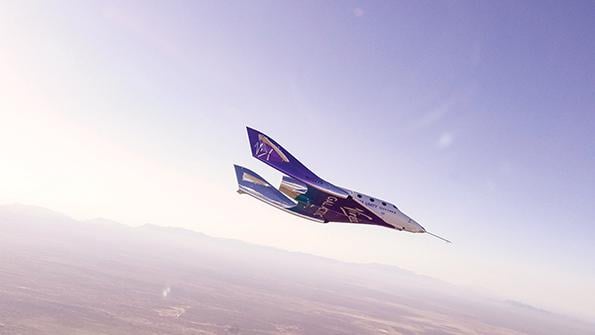Virgin Galactic Sees Sweet Spot For Microgravity Research Flights

Virgin Galactic sees suborbital flights of its spaceplanes as an early step for microgravity research.
Virgin Galactic is betting that people are willing to pay big bucks to fly experiments and prototypes to the edge of space.
The space tourism company is setting aside a small portion of its flight schedule for microgravity research flights, missions it says could play an important role in the future space economy.
- Backlog for ISS shows there is pent-up demand for space research
- Space medicine is generating much interest
Research flights are at the “core to our vision of opening space,” Virgin Galactic CEO Michael Colglazier said on the company’s second quarter earnings call on Aug. 1. “We believe that research is a profitable business along the way. We also believe research appropriately adds a positive halo over the top of commercial [tourist] spaceflight.”
The company has allocated about 100 of its first 1,000 flights to research missions. In the near term, it aims to fly a research mission about once a quarter. The Galactic 01 mission—its first suborbital science flight, with 13 experiments aboard—flew in June. Virgin Space Ship (VSS) Unity carried three crewmembers from the Italian Air Force and Italian National Research Council to nearly 53 mi. in altitude.
Virgin Galactic sees its SpaceShipTwo vehicle positioned in a “sweet spot” in the suborbital-to-orbital pipeline for microgravity research. On the lower end of that pipeline, parabolic flight provides about 20 sec. of weightlessness. On the high end, missions to the International Space Station (ISS) can provide months of microgravity for experiments.
SpaceShipTwo can rocket to the edge of space for 3 min. of microgravity—slightly shorter than the average length of a pop song. However, that brief period could be a useful steppingstone between parabolic flights and the ISS (and future commercial space stations) for improving prototypes or deepening research, Virgin Galactic contends.
“These [microgravity] platforms don’t compete with each other; they complement one another,” Kathleen Karika, director of research operations at Virgin Galactic, said at the ISS Research and Development Conference in Seattle on Aug. 1. “There are a lot of benefits to using one [platform] to mature your business case and mature the research, so as you go to the next platform you have a higher chance of success.”
Furthermore, launching payloads to the ISS requires a long wait, resulting in pent-up demand, Colglazier noted. “It takes a long time to get in line because there’s not that much capacity for that,” he said. “It’s very expensive to get it [to the ISS] and you kind of have one shot to make it work. And that’s a lot of pressure on those experiments to make them very robust. Plus, you have one experiment that lasts a long time.”
Flying experiments on SpaceShipTwo is less expensive than the ISS and can be done more frequently, Colglazier added. “Now researchers can actually plan for a sequence of experiments or repeating experiments,” he said.
Frequent flights could allow engineers or scientists to iterate more quickly, Karika said. “You’re doing that fly-fix-fly model of testing the technology and then taking it to the next phase,” she said.
Purchasers of microgravity research time are usually government-funded institutions. “So, what we’re doing now is taking the success of this first flight and putting that into a kit that all those researchers and government agencies can use in their own appropriations discussions,” said Colglazier, who adds the kit is for both U.S. and non-U.S. government agencies.
Virgin Galactic’s SpaceShipTwo vehicle seats four people. “Each spot where there’s a seat, we can substitute that for a rack of payloads, and a rack holds four middeck lockers,” Karika said. Experiments can also be worn on the bodies of crewmembers.
For example, on the Galactic 01 mission, as part of neuroplasticity research, crewmembers “shoved vials with brain cells in absolutely every pocket that they could get [them] into,” she said. “We’re seeing a lot of interest right now in space medicine.” Testing 3D printers aboard VSS Unity, prior to launching to the ISS, is also of interest to potential customers, she added.
Virgin Galactic plans for its first private astronaut flight of VSS Unity to take off on Aug. 10. The company is targeting a third commercial flight later in the third quarter and up to three flights in the fourth quarter.
Although the first three commercial passengers are due to fly this month, new ticket sales are on hold until the company’s larger, six-seat Delta-class spaceplane enters service in 2026, Virgin Galactic says. That leaves VSS Unity as the sole vehicle in service. With about 800 ticket holders in the backlog, Virgin Galactic has about four years worth of flights at the expected mission rate between now and 2027, it says. Of those 800 ticketed seats, some 600 were sold at an average price of $450,000.






